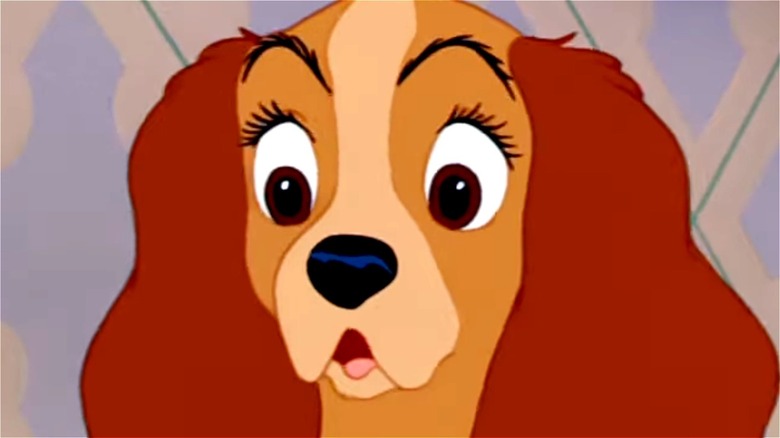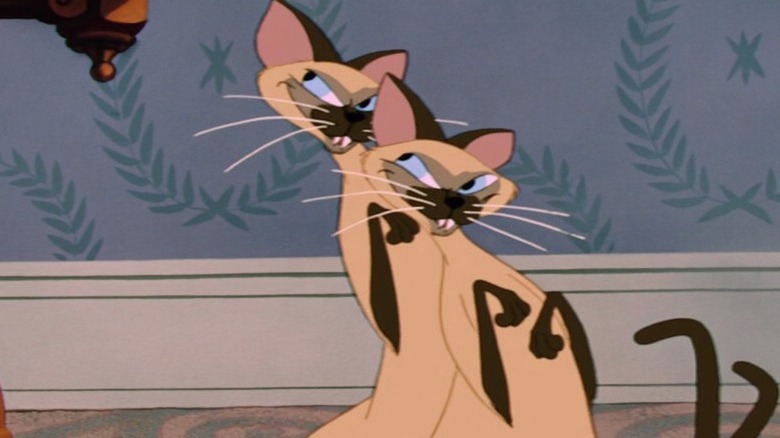The Lady And The Tramp Scene That Went Too Far
Released in 1955, the Disney animated film "Lady and the Tramp" — which follows the titular canines as they fall in love, ultimately overcoming class differences to find a happy ending — delighted viewers with its enchanting storytelling and technical prowess. Over the years, Disney has re-released the cartoon classic to sustained box office success (via IMDb). Mining the rich nostalgia for the film, Disney also produced a live-action remake of the beloved classic, which aired on Disney + in 2019, and when discussing the recent adaptation, a critic noted, "Watching the remake over-explain every joke and dramatic beat only increases one's appreciation for how the original trusted its young audience to understand subtext, satire, and emotional nuance" (via AV Club).
To this day, the 1955 film remains a fan-favorite love story, even earning a spot on AFI's list of "The 100 Greatest Love Stories of All Time." At the same time, not every component of the film has aged well. In 2020, "Lady and the Tramp" was one of many films flagged on Disney+ for its racist imagery (via Deadline). An advisory attached to the movie explains, "These stereotypes were wrong then and are wrong now. Rather than remove this content, we want to acknowledge its harmful impact, learn from it and spark conversation to create a more inclusive future together."
While a few moments in "Lady and the Tramp" arguably exhibit damaging stereotypes, one particular scene rather infamously went too far.
The Siamese cats in Lady and the Tramp are racist Asian stereotypes
Midway through the film, two Siamese cats called "Si" and "Am" cause chaos in the living room, ultimately framing Lady for their destruction. Not only are the names of the characters offensive and reductive, but the animation design itself leans into ethnic stereotypes, displaying buck teeth and slanted eyes. During this scene, the duo also sings "The Siamese Cat song," which is an exaggerated and racist parody that heavily relies on accented, broken English. Tellingly, "Lady and the Tramp" debuted two years after the Korean War, during which anti-Asian stereotypes and propaganda ran rampant (via Time).
As a writer for Mic articulated, "Similar stereotypes were used to reinforce fear of the so-called yellow peril in the late 19th century. Specifically, the notion that sneaky East Asians posed a mortal danger to the rest of the world led to strict fierce anti-immigration policies to keep them out of the United States."
The introduction of the two cats arguably deploys the same kind of East Asian xenophobia, emphasizing a storyline that positions the characters as villainous antagonists of the dainty and refined Lady.
Along with receiving an advisory warning for its offensive content, "Lady and the Tramp" also underwent a narrative reworking in the 2019 adaptation. Notably, the scene with the two Siamese cats was removed (via Yahoo). Instead, singer Janelle Monáe collaborated with the production team to create a new canine character as well as a jazzy musical number (via Slate). Clearly, this was the right choice.

